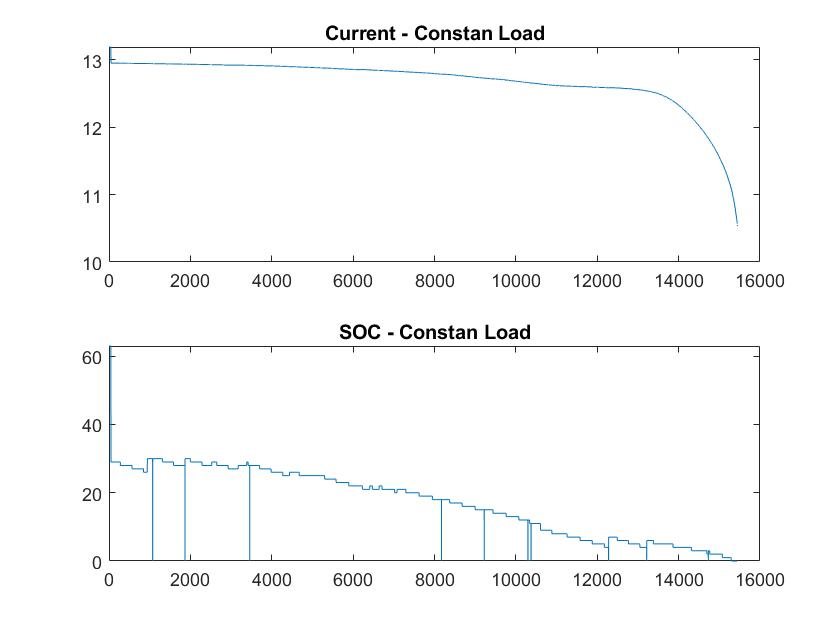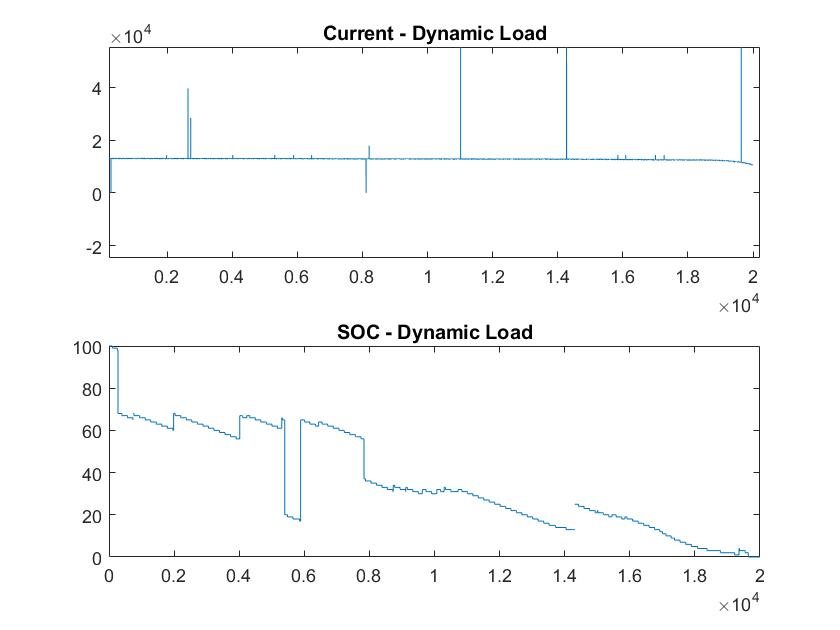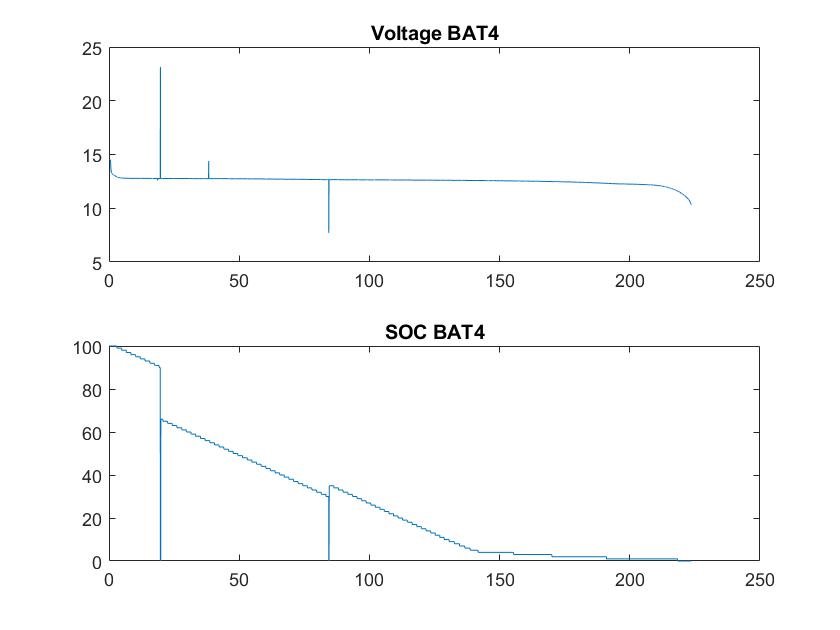Other Parts Discussed in Thread: BQSTUDIO
Hello,
I'm trying to use the BQ34Z100-G1 to supervise a battery of LiFEPo4 -12.8V and 9AH. The load that has to manage this battery is dynamic, for example, a current pulse of 3A, then 0.6A for five minutes and finally 1A for 2 hours. I did the test to identify the chemistry of the battery and then the learning
I followed the recommendations mentioned here http://www.ti.com/lit/an/slua948/slua948.pdf for dynamic loads. Selecting the Load mode = 0 (Constant current) and Load Select = 3 (Low pass filtered average load). In resume, this is the configuration that I'm using:
To test the behavior of the gauge I carried out two tests, the first one with constant load and the second one emulating the load of my final product. Getting the following results:
(Ignore the spikes in the charts, That's a measurement problem)
The jumps up in the estimation of the SoC shouldn't happen if I active the SMOOTH mode in the gauge. Here's my problem, why does the SoC deviate so much? The error of this device is supposed to be small. Exist another configuration that I have to do to improve the prediction of the gauge when I'm using dynamic load?
I would very much appreciate help in optimizing the operation of this device for dynamic load.
Thanks a lot,
Andres Suarez




